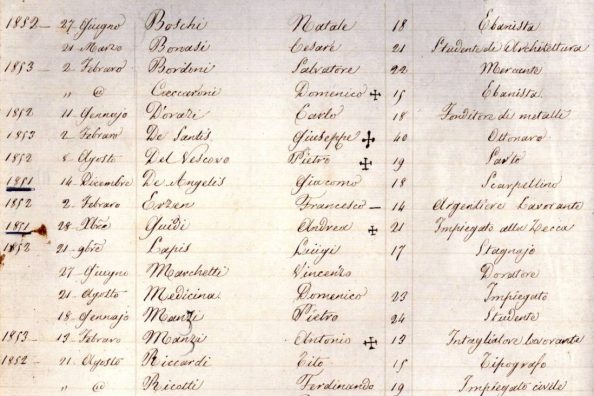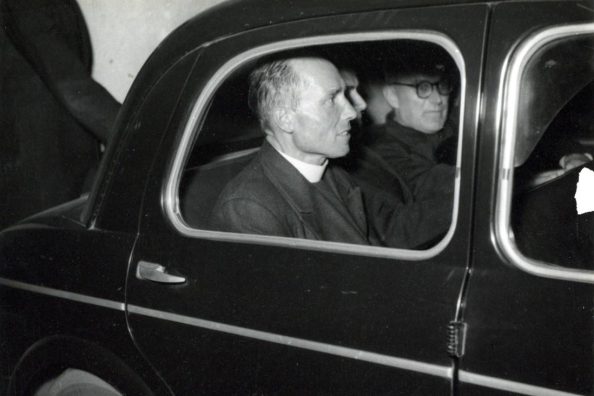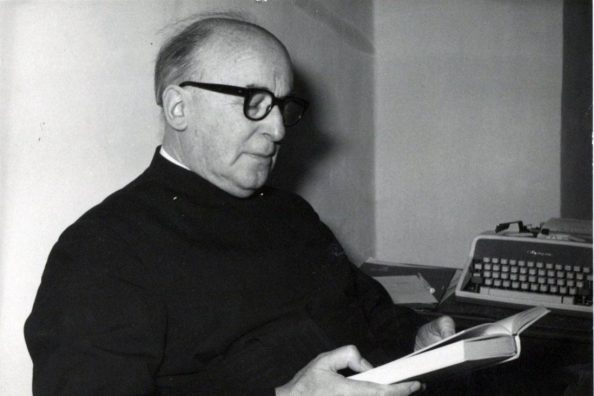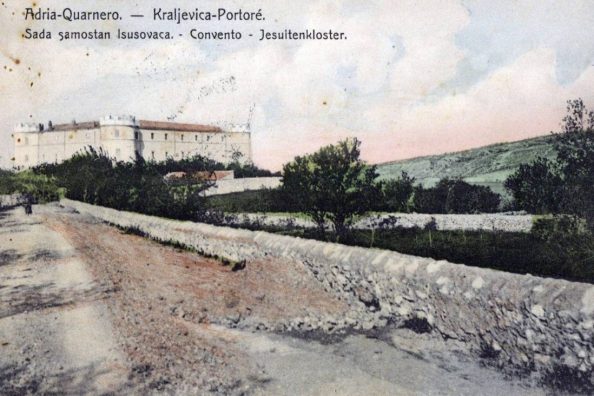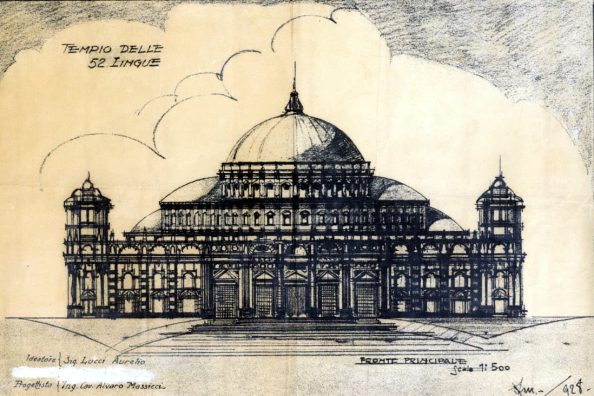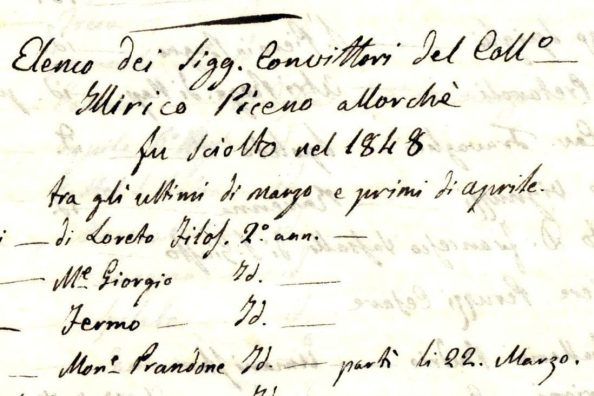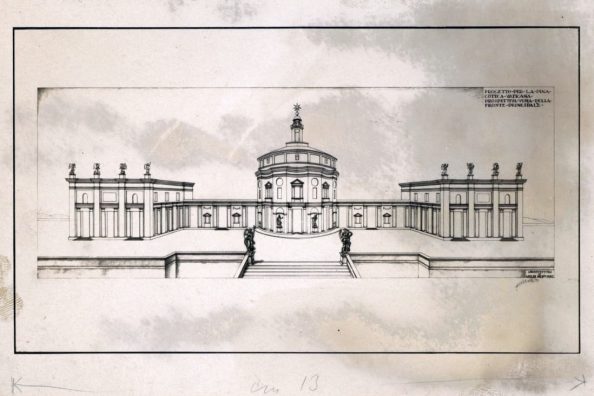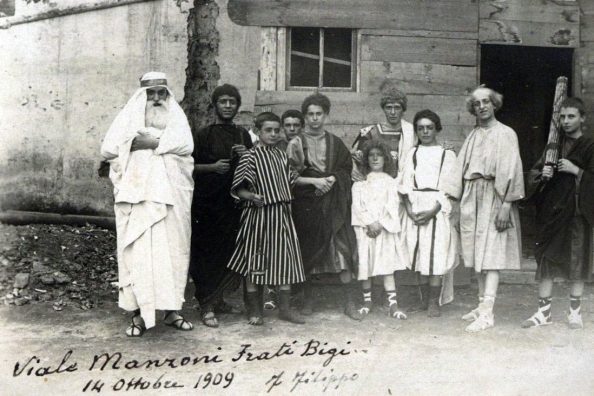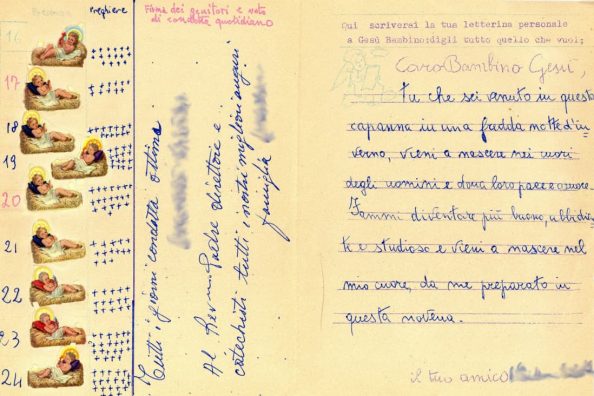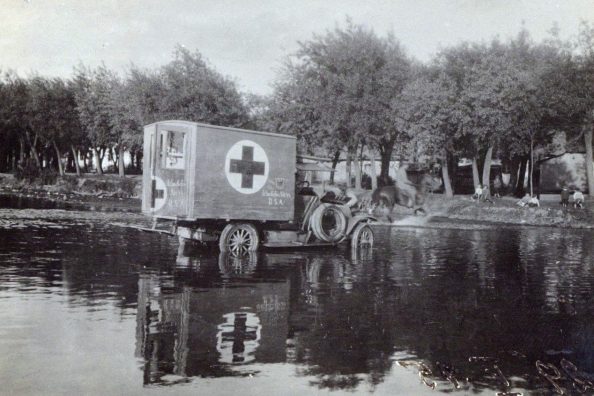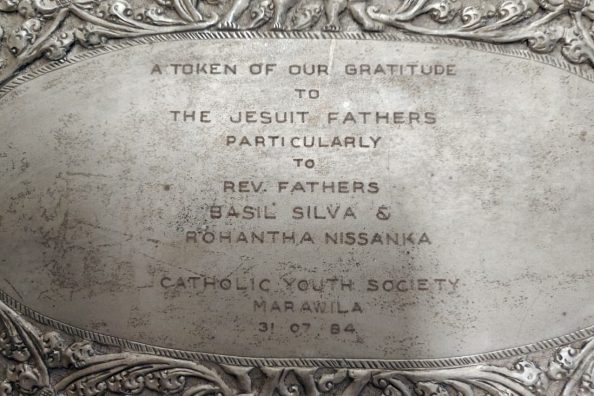P. Nicola Angelini: writer of epigraphs

On the occasion of 2 November, the feast of the dead, we dedicate an in-depth look at tomb epigraphs.
Churches, cemeteries, the whole of Italy are dotted with tombstones, marble inscriptions, effigies that provide us with information on the history of a property, a war hero, fallen soldiers, events, but they are almost never signed and we know nothing about the person who designed them.
Famous are those that testify to the temporary residence, often lasting just one night, of Giuseppe Garibaldi, who seems to have stayed everywhere in Italy: almost every town or city boasts a plaque in imperishable memory of the event.
As we said, most of the plaques commemorating events or people are often not signed, but there are only a few laconic references to who commissioned them: the municipality, an association, a family.
Thanks to some documents in our archive, we can give a name and a grade to the author of a fair number of gravestones, some of which were ‘designed’ to be placed in some colleges of the Society of Jesus in Rome, others whose location is not specified.
In the series of personal documents, there are also those of Fr Nicola Angelini.
Born on 10 September 1824 in Frosinone, he entered the Society of Jesus on 30 October 1841 in the novitiate of St Andrew’s at the Quirinal in Rome, taking his last vows on 2 February 1857. Fr Angelini died in Rome on 3 March 1906. It was his stay, from childhood onwards, in the Jesuit Company’s boarding schools that gave him a solid command of Latin.
Of Fr. Angelini’s work, a small corpus of notes has survived – about 35 papers – relating to the texts of the engravings that show the text composed by the Jesuit for those tombstones he was commissioned to write during his lifetime.
This document has allowed us to reconstruct this particular activity of Fr Angelini, who was certainly an expert in Greek and Latin.
The first is dedicated to the restitution of the Germanic-Hungarian College and is in two versions, a longer and a shorter one, with a note by the Jesuit: ‘I like the first one better: but V. Rev. do as you think best. Infimous servant in Christ, Nicola Angelini’.
This document also allows us to understand that the stone carver had several drafts to propose to his client.
Another is dedicated to Pope Leo XIII on the occasion of his visit to the Pius Latin American College.
Many gravestones are in Latin, but touching gravestones in Italian also stand out in the corpus, such as one dedicated to a deceased sister.
O Pauline Dearest Sister Virgin of Ancient Faith Whom thou didst nourish with the bread of Angels and every fine Christian virtue Now that you are reunited with your sweet parents Giuseppe Crosetti and Maria Mancini Pray with them for your germani Pietro and Rosina Whom you left in grief and longing. 11 September 1893. Fifty years old.
In the plaques commissioned the memory of fathers, wives, husbands, such as the one in honour of Baron Moschini Live in Eternal Peace The Chosen Spirit Of Baron Leopoldo Moschini What a religious benefactor Amid the turmoil of life Always kept his soul In God confident Born in Venice at [date missing].
[data mancante]
He died near Florence on 10 April 1899. The Marquise Filomena Veti Wanted to perpetuate the likeness of her beloved spouse in this effigy.
The most touching, dedicated to a child who died very young: Thirteen months alone we enjoyed you O beloved Alfredo New Angel Flying to Heaven on 13 September 1893 We hope to see you again in God Archangel Gabriel and Mary. Your parents. Unfortunately for gravestones made for private individuals, there is no reference to their location. Have you seen one of these gravestones in your town? Feel free to send us a photo, the historical archive will gladly receive the testimony of the imperishable memory of Fr. Angelini’s work for the benefit of the deceased.
Maria Macchi
